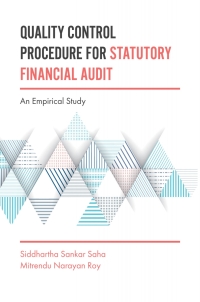ou roll How did the US deal with the Japanese invasion of China and Southeast Asia? a. Trade embargoes against Japan of iron ore, steel, oil, rubber, etc. b. Gave financial aid to the Chinese Nationalists. c. The US did not involved troops. O d. All of these. 2. The goal of the Japanese attack on US military bases and Pearl Harbor in December 1941 was to AO O a. Destroy the American and British fleets to gain time to take over much of Southeast Asia. b. Show to the US and Great Britain the strength of the Japanese air force. c. Defend their part of the Pacific ocean. d. End the war in the Pacific. Ad 3. What was absent from Pearl Harbor on the day of the Japanese attack that later gave the US advantage ov O a. Three major aircraft carriers. b. Many of the newest battle ships. c. The US Air Force. d. Submarines. Ad 4. According to the author, the Battle at Midway was the first all air-sea battle between Japan and the US. a. FALSE O TRUE 5. The US found themselves fighting in the Pacific against the Japanese and in Europe against the axis power. had priority? Re O a. War in Europe. Te 09 RAWATAN America and the World War - Activity/Quiz Reading Quiz: The History of WWII Playa Cou Prod Ad d. All had the same priority. 6. Operation Torch introduced the US in later years to Middle Eastern affairs. O a. FALSE b. TRUE 7. Operation Torch drove Germany out of North Africa and opened which country for the allied forces? O a. South of Italy b. Egypt c. France d. None of these 8. In which Russian city did Germany surrender and that is deemed the turning point of the war? O a. Stalingrad b. Moscow c. Leningrad d. Omsk 9. In Normandy the O a. Largest amphibious assault in history took a beachhead. b. French forces faced horrendous defeat by Germans. c. US forces were involved in their first assault of WWII. & None of these. 10. According to the author, one goal of the allied forces during WW II was to O a. Liberate France. AC Ad RO Te 09 Review window. November 6, 2020 at 09:55 PM TO November 7, 2020 at 9:55 PM Submitted: November 06, 2020 03:26 AM Score: 24.00 / 30.00 Plat Cor PL 10. According to the author, one goal of the allied forces during WW II was to O a. Liberate France. b. Keep Russia in the East. c. Colonize North Africa. d. Take Southeast Asla for themselves. 11. What tactic involved "Blitzkrieg"? A a. Pushing through all of the army through a narrow line of territory Into the heart of the enemy. O b. Pushing through an army of a wide front line into the heart of the enemy. c. Surprise attack on a country. d. Go in, go out! Ad 12. Allied forces used the deep battle tactics to end the war with Germany. What are deep battle tactics? a. Carry out an attack across a wide front line with a series of smaller but sharp frontal attacks on the enemy. b. Attack in unsuspected places along the battle line, reserve forces pouring through the gap to hold the territo c. Confuse the enemy and force them to deploy defensively to a large number of areas. O d. All of these. Ag 13. The project to develop the atomic bomb was called? O a. Manhattan Project Los Alamos Project. c. Einstein Project d. None of these. RE 14. Japan was not ready to surrender after Germany was defeated. The decision to use the atomic bomb was made after the Te 09 Reviuw window. November 06, 2020 at 09:55 PM 10 November 7, 2020 at 09:55 PM Submitted: November 06, 2020 03:26 AM Score: 24.00 /30.00 History of Prol Ad 12. Alled forces used the deep battle tactics to end the war with Germany. What are deep battle tactics? a. Carry out an attack across a wide front line with a series of smaller but sharp frontal attacks on the enemy. b. Attack in unsuspected places along the battle line, reserve forces pouring through the gap to hold the territory c. Confuse the enemy and force them to deploy defensively to a large number of areas. Od. All of these. 13. The project to develop the atomic bomb was called? O a. Manhattan Project. b. Los Alamos Project. c. Elnstein Project d. None of these 14. Japan was not ready to surrender after Germany was defeated. The decision to use the atomic bomb was made after the Japanese used suicide missions and kamikaze pilots. a. FALSE O b. TRUE 15. After the dropping of the bombs on Hiroshima and Nagasaki who forced the Japanese government Into surrender? a. Emperor Hirohito b. Adolf Hitler c. Franklin D. Roosevelt Harry Truman A Ad Submit RO Tel 09 Review window. November 06, 2020 at 19:55 PM TO November 7, 2020 at 19:55 PM Submitted: November 06, 2020 03:26 AM Score: 24.00 / 30.00 MacBook Pro










